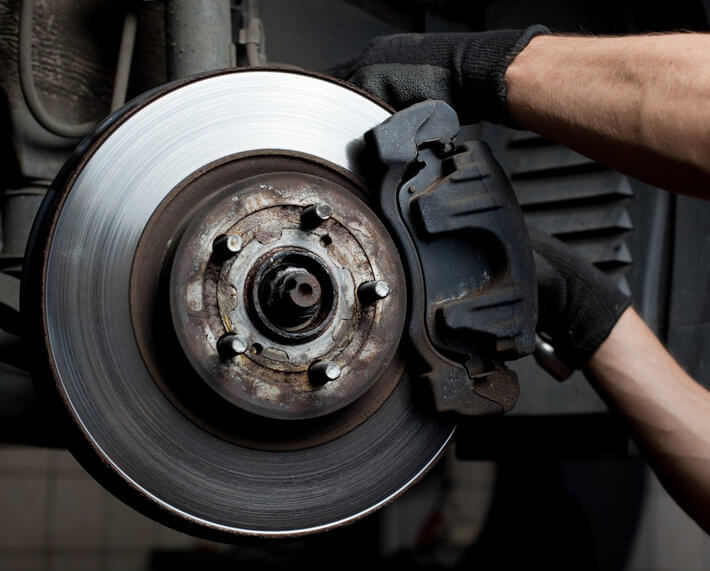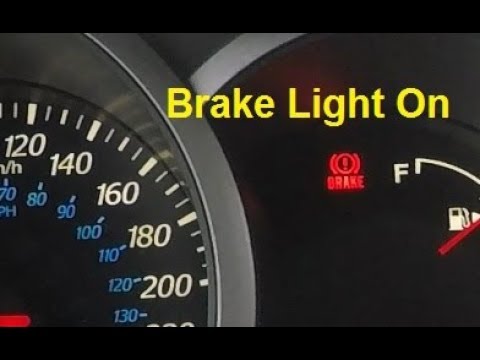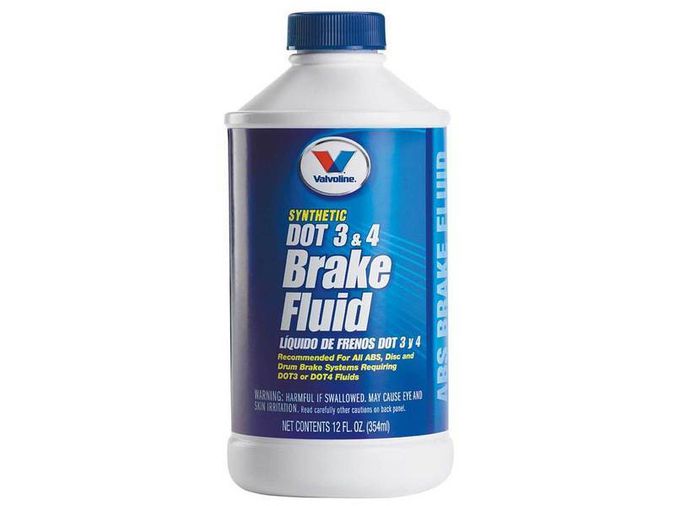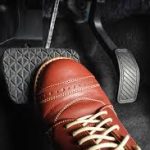What is a brake caliper? In today’s article, we are going to consider what a brake caliper is, it’s functions etc. Brake calipers are one of the most significant pieces of your car’s brake system and are one of the most vital brake parts. Disc brakes are now standard on most cars, at least for the front wheels. However, disc brakes are now used at the rear of many cars and trucks. The car’s wheels are joined to metal discs, or rotors, that spin along with the wheels in a disc-braking system. The caliper’s job is to slow the car’s wheels down by creating friction between the rotors.
The brake caliper acts as a clamp over the rotor. Brake pads are a pair of metal plates joined with friction substance that are found inside each caliper. The outboard brake pads are on the outside of the rotors (facing the curb) and the inboard brake pads are on the inside of the rotors (facing the road) (toward the vehicle). When you press the brake pedal, brake fluid from the master cylinder exerts hydraulic pressure on one or more pistons in the brake caliper, causing the pads to press on the rotor. The brake pads feature high-friction surfaces and serve to slow or stop the rotor. Because the rotor and the wheel are connected, as the rotor slows or stops, so does the wheel.
Drum brakes were used on older cars and trucks, where friction between a revolving drum and brake shoes installed inside the drum slowed the wheels’ speed. Heat and gases built up inside the drum as a result of the friction, which often resulted in brake fade, or a reduction of braking power. Because disc brake pads are exterior to the disc rather than being trapped within a drum, they are more easily ventilated and heat does not build up as quickly. As a result, disc brakes have mostly replaced drum brakes in modern automobiles; nevertheless, some less priced cars still employ drum brakes for the rear wheels, which require less stopping power.
Floating (or sliding) calipers and fixed calipers are the two major types of calipers. Floating calipers have one or two pistons on the inboard side of the rotor and move in and out relative to the rotor. When the brakes are applied, this piston pushes the entire caliper forward, causing friction between the brake pads on both sides of the rotor.
Fixed calipers feature pistons located on opposing sides of the rotor and do not move, as the name implies. Fixed calipers are regarded for their reliability, but they are more expensive than floating calipers. Two or more pairs of pistons (or “pots”) are positioned on each side of the rotor in some high-performance fixed calipers, with some having as many as six pairs in total.
Read also: How To Check Transmission Fluid: Easy Steps
Symptoms Of a Bad Brake Caliper
If your car shows the following signs, then you should know that your brake caliper needs to be fixed or replaced.
Car Shifts To One Side When Driving
Is there a tendency for the car to pull or steer to one side while driving? The master cylinder exerts hydraulic pressure on the braking caliper, which causes pistons to move in and out. The brake pads will either fail to release the rotor or fail to come into touch with the rotor if the pistons freeze up owing to debris or rust. The car will pull to the side of the injured caliper in the first situation. The vehicle will pull away from the damaged side if the brake pad fails to make contact with the rotor. This might happen when the brakes are used or while the vehicle is running normally.
Metallic Rubbing Sounds
A noise coming from the damaged element is another sign of a stuck or frozen brake caliper. If the problem is with the brake calipers rather than the brake pads, the noise will occur while driving, but brake pad problems will result in a noise when the driver applies the brakes. Make an appointment with an auto repair shop as soon as possible, since a frozen or blocked caliper can cause the brakes to totally lock up.
Brake Pads Wear Down Unevenly
It’s probable that the brake caliper is to blame if one side of the vehicle’s brake pads appear to be thinner than the other. Bring the vehicle to an auto repair shop and have a skilled technician examine the issue.
Clunking Sound
This is a far less common symptom than the others, although it’s possible that the bracket that keeps the brake caliper in place is defective. The fractured bracket makes a loud clunking sound while in operation in these circumstances. Do not drive the vehicle if this occurs. The brakes may totally lock up, putting the driver and other motorists at danger of serious injury.
How To Paint Brake Calipers
It’s always a shame to allow rusty brake calipers ruin the overall glossy look of your car if you like to keep it looking beautiful and clean. If you spend money on a new set of gleaming wheels, for example, you want the rest of the car to appear just as nice. Maintaining the aesthetics of your brake calipers is surprisingly simple, so there’s no reason to let them detract from the overall design of your vehicle. Some individuals believe that you need remove all of your brake calipers in order to complete this procedure effectively. This converts a basic cleaning and painting operation into a considerably more involved one, with no guarantee of better outcomes.
There’s no need to remove the brake calipers from the automobile to paint them if you’re careful about safeguarding the other parts of the brakes.
Follow the steps below, if you want to paint your brake pads without fully removing them:
To begin, gather and prepare all of the necessary materials. It’s pointless to begin a project if you lack the essential tools to do it successfully. You’ll need the following items to get sparkling clean and glossy brake calipers:
-
- 1 large piece of sturdy cardboard
- 2 cans of enamel spray paint
- Several plastic carrier bags (or a few lengths of plastic sheeting)
- 1 stiff toothbrush
- 1 can of brake cleaner
- Masking tape
- A ramp or car jack
- Loosen the nuts on all four wheels, but don’t entirely remove them.
- First, jack up the front of the car to elevate the front wheels off the ground.
- Remove the nuts on the front two wheels before entirely removing the wheels. Make sure you keep the nuts in a secure location so you don’t lose them before you need to replace them.
- Once the wheels have been removed, the dusty and presumably rusted brake calipers will be exposed.
- To clean the calipers, squirt some brake cleaner onto a toothbrush and scrub them clean. To completely clean the calipers, you’ll need to apply multiple rounds of brake cleaner. Do not spray the cleaner directly onto the calipers; instead, spritz the cleaner onto the toothbrush and apply it that way.
- It’s possible that you’ll need to spend some time cleaning the calipers. The more time you devote to this phase, the greater the overall effect will be after you’re done.
- Remove the front retainer clip and cover the bleeder valve with masking tape once you’ve done washing the calipers clean. Make sure the valve is completely covered with tape because you don’t want any paint on it. Tape the brake hose fittings as well as the valve is covered. When painting the caliper, you’ll need to keep them in mind.
- Cut a piece of rigid cardboard in the shape of an upside-down letter L from it. The L should be large enough to fit over the bracket that holds the caliper in place, shielding all of the car’s components behind it.
- Cover the rotor with one of the plastic carrier bags or plastic sheets to protect it from the spray paint. To trap the plastic between the brake pads and the rotor wheel, you’ll have to spin the rotor. Otherwise, you’ll end up with gaps on the rotor that aren’t covered by the plastic, and if paint gets into these gaps, the brake pads will become stuck to the rotor, preventing the brakes from working. To keep the plastic in place, you may need to use a couple of pieces of masking tape.
- Slow and even strokes should be used to spray the caliper. Take your time to create smooth, even layers, since this will result in the greatest completed product. It doesn’t matter if paint gets on the side of the brake pad that meets the caliper; just make sure there’s no paint between the brake pad and the rotor. This is the benefit of removing the calipers fully, however removing the calipers from the car is unnecessary if you have taken the appropriate procedures to completely cover the rotor.
- Remove the plastic and cardboard after the paint has dried. Return to the previous wheel and continue the process.
- Once you’ve painted the front brake calipers, remove the jacks from the front of the automobile and lift the back end instead. Before reattaching the wheels, make sure the paint is totally dried. Take your automobile for a trip and test the brakes after you’ve painted all four calipers and replaced the wheels. If you notice any issues, contact a local mechanic to get your brakes inspected.






